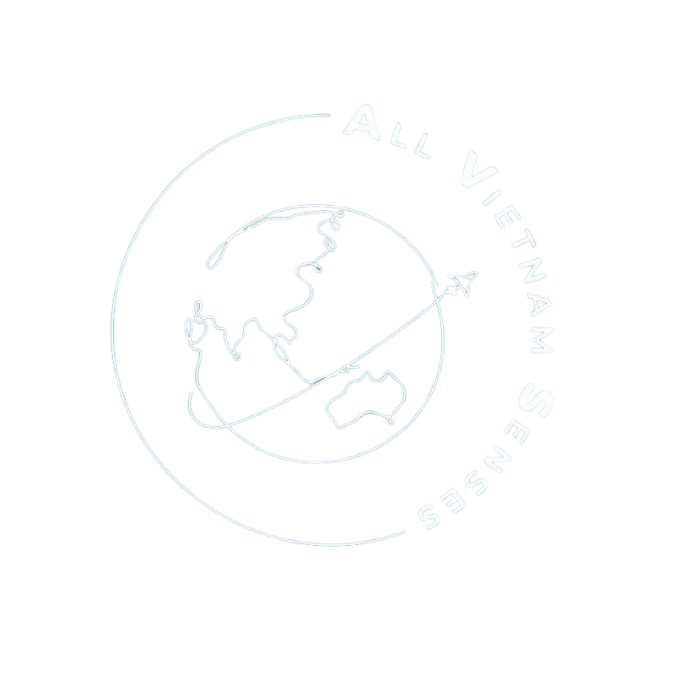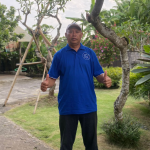What to Pack for a Trip to Vietnam
You’ve chosen your holiday destination: Vietnam. This increasingly popular destination fascinates travelers with its landscapes, rich cultural and historical heritage, and incredible ethnic diversity.

Located at the eastern end of the Indochina Peninsula, Vietnam stretches in the shape of the letter S (some see it as the silhouette of a dragon). At its narrowest point, the country is only 48 kilometers wide. Its neighbors are China to the north, Laos and Cambodia to the west. The South China Sea lies to the east and south, along a coastline of over 1,600 km, while the Annamite Range mountains rise along much of the western facade of the country. Notably, two of its largest rivers, the Mekong in the south and the Red River in the north, end their course in vast marshy plains known as deltas.
This geographical diversity is divided into three main regions, each corresponding to different climate zones. Depending on your itinerary, you’ll need to pack accordingly for your stay in the north, central, or south regions of the country, taking into account the season.
This article will guide you and help you prepare your luggage for Vietnam.
Overview of the Climate in Vietnam’s Three Regions

Northern Vietnam
The best time to visit northern Vietnam is generally from November to early May, a period known as the Vietnamese winter, with fairly mild weather and temperatures between 10 and 15°C.
Central Vietnam
The most pleasant time to explore central Vietnam is from February to May. It’s good to know that between November and the end of January, rainfall is significantly higher here than in the rest of the country. Typhoons are also common in September and October.
Southern Vietnam
The best time to enjoy southern Vietnam is during the dry and sunny season from December to April. February is the driest month of the year. March and April have higher temperatures (34/35°C).
Overall, the sun shines almost throughout the country, despite the presence of monsoon episodes. It is more enjoyable to visit Vietnam during the dry season from November to April, although it’s possible to discover the country in all seasons. During the wet season, alternating sunshine and rain remains pleasant, with brief showers usually falling in the late afternoon. The Mekong Delta and the central highlands have significant rainy seasons in May and October, sometimes making access to certain sites difficult.
What Clothes to Pack Based on Vietnam’s Regions

General Guidelines
Regardless of your departure date and destination, opt for lightweight clothing made from natural fibers or technical fabrics that regulate temperature and dry quickly. Avoid cotton and denim as they are difficult to dry and relatively uncomfortable. Synthetic materials are more suitable. For evenings or stays in high-altitude areas, bring a sweater or pullover. Wear good walking shoes for mountain hikes and easily removable sandals for temple visits. Keep in mind that Vietnam is a conservative country with strong Confucian values where politeness, discretion, and respect are essential. Walking around in swimwear outside of the beach is considered disrespectful, as is wearing revealing clothing.
To protect yourself from mosquitoes, bring repellents for both skin and clothes and favor covering clothing.
Northern Vietnam
Pack pants, capris, and t-shirts. You can also bring shorts, tank tops, and dresses. For the evenings, include a jacket or sweater in your suitcase. From May to October, temperatures are at their highest. Bring rain gear if traveling in July and August, as well as sandals (wet, closed shoes can be very uncomfortable). For a cruise in Halong Bay, dress casually (pants, t-shirt, shorts, shirt), but also bring a windbreaker. If traveling in winter, pack warm clothes (including gloves and a hat), especially if staying in the mountainous areas of Sa Pa or Ha Giang.
Central Vietnam
The central region offers a compromise between north and south in terms of climate, with a climatic boundary at the Hai Van Pass (above Da Nang), dividing the area into two zones with characteristics of either the north or the south, but less extreme. Bring lightweight clothing if you plan to visit Da Nang, Hue, or Hoi An between February and May. The seaside resorts of Nha Trang and Mui Ne are known for their sunny and dry climate year-round, so pack light and casual clothes.
Southern Vietnam
If traveling between December and April, you’ll experience dry and sunny weather, so pack light and loose clothing. From July to September, bring a raincoat if visiting the Mekong Delta. It’s not recommended to visit other parts of southern Vietnam during this period as the region often experiences floods, with hotels sometimes closed.
What Clothes to Pack Based on the Seasons in Vietnam

Traveling in Winter (December to March)
- Northern Vietnam: The Tonkin and Upper Tonkin regions can experience very low temperatures. Pack warm clothes like wool sweaters, fleeces, hats, and scarves. Closed shoes are recommended to keep your feet warm.
- Central Vietnam: While the central region experiences milder temperatures during winter, the evenings can still be cool. Bring warm clothes like wool sweaters, light jackets, and long pants. Include a raincoat.
- Southern Vietnam: Temperatures here are generally warm during winter, with occasional cool evenings. Pack light and loose clothing like t-shirts, long pants, and light jackets. Don’t forget an umbrella.
Traveling in Spring (Late March to Late June)
- Northern Vietnam: Early spring can still be marked by cool daytime and cold nighttime temperatures. Pack light clothing for the day (t-shirts and cotton pants) and a light jacket for the evenings. As temperatures rise, opt for lighter clothes.
- Central Vietnam: The region enjoys pleasant temperatures in spring, so pack light and comfortable clothing. Bring a light jacket for the evenings and a raincoat for occasional showers.
- Southern Vietnam: This period is characterized by high temperatures. Prioritize light, loose, and breathable clothing. Also, bring sun protection (sunscreen, sunglasses, hat).
Traveling in Summer (Late June to Late September)
- Northern Vietnam: Summers in northern Vietnam are hot and humid. Pack light and loose clothing, along with a raincoat.
- Central Vietnam: The central region also experiences a hot and humid summer with tropical storms. Light and comfortable clothing is necessary, along with a jacket or raincoat for protection against rain and strong winds.
- Southern Vietnam: Summer is the hottest and most humid season here. Pack t-shirts, shorts, and summer dresses, as well as covering clothing for sun protection (don’t forget a hat, sunglasses, and sunscreen).
Traveling in Autumn (Late September to December)
- Northern Vietnam: This is arguably the most pleasant season, despite occasional showers. Pack light clothing and sports shoes, along with a jacket for the sometimes cool evenings.
- Central Vietnam: The region enjoys pleasant weather with occasional rains. Pack light clothing but don’t forget a raincoat and an umbrella (which can also serve as a sunshade).
- Southern Vietnam: Autumn is a comfortable season with dry and mild weather. Light and comfortable clothing will be perfect for this period.
Footwear for a Trip to Vietnam
If your visit to Vietnam is limited to major cities like Hanoi, Ho Chi Minh City, or Da Nang, simple flip-flops will be perfect in warm weather. You can also consider sandals or flat ballet shoes. However, if your itinerary includes hiking or trekking, bring your walking shoes, and if you are hiking in winter, a good pair of sneakers will suffice.
Dress Code for Sacred Places
Religious sites in Vietnam are open to visitors, provided certain rules are followed, such as removing your shoes before entering a pagoda or temple and wearing decent clothing. This means covering your knees and shoulders. Some sacred sites offer tourists judged to be too lightly dressed (either free or for a fee) the loan of covering garments. If you plan to visit Buddhist sites, avoid wearing bright red or black clothing, as these are mourning colors.
It is also worth noting that some non-religious sites, such as Hoa Lo Prison, the house at 48, or Ho Chi Minh’s Mausoleum, also require wearing decent clothing out of respect for the site’s history. Finally, if you plan to visit small remote villages, it is also advised to wear decent clothing. Women are particularly advised against wearing too revealing outfits to avoid being perceived negatively. The locals might see it as impoliteness and may not welcome you as warmly.
Accessories to Pack for a Trip to Vietnam
To enjoy the tropical weather, don’t forget to bring a pair of sunglasses (along with good sunscreen to accompany your mosquito repellent) and a hat. Swimsuits and sarongs are essential if your trip includes beach stops. Depending on the region and potential drizzles, consider packing a windbreaker or raincoat. In any case, roll up a large scarf, which can serve both to keep you warm in the evening and to cover yourself when visiting temples and pagodas.
Evening Wear for a Trip to Vietnam
There isn’t a strict dress code, but you should follow the standards of the establishment: a four-star restaurant will more likely require elegant attire compared to a street food joint or a beachside shack, where shirts and flip-flops will be appropriate. For comfort reasons, avoid wearing shorts and flip-flops in clubs and nightclubs. Other nice evening spots are rooftop bars. Often luxurious, and while there might not be a dress code, you can choose to be either casual or distinguished.
This guide aims to help you prepare your luggage effectively for a trip to Vietnam, ensuring you have the appropriate clothing and accessories for a comfortable and enjoyable experience in this beautiful and diverse country.


